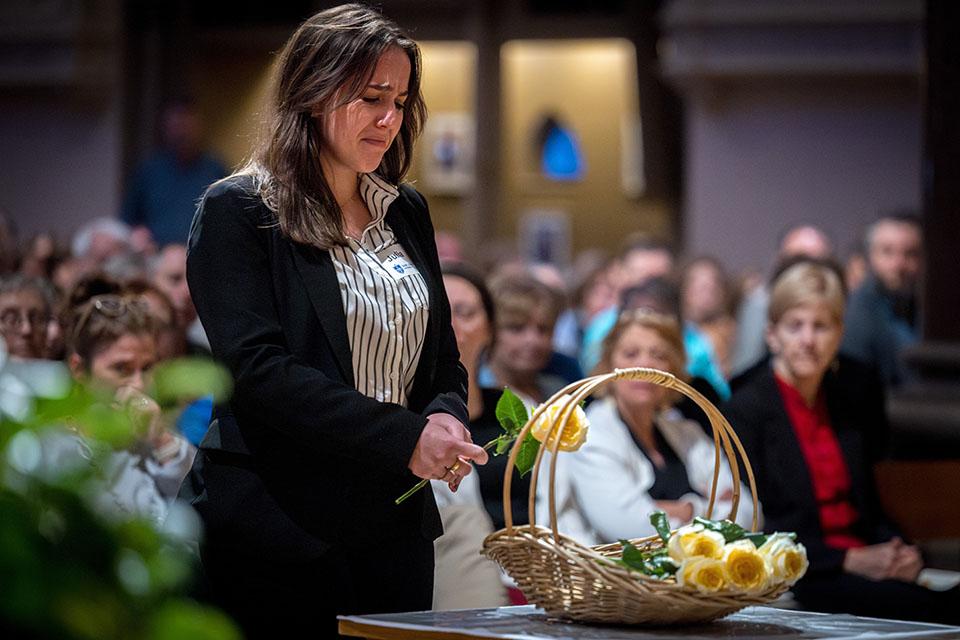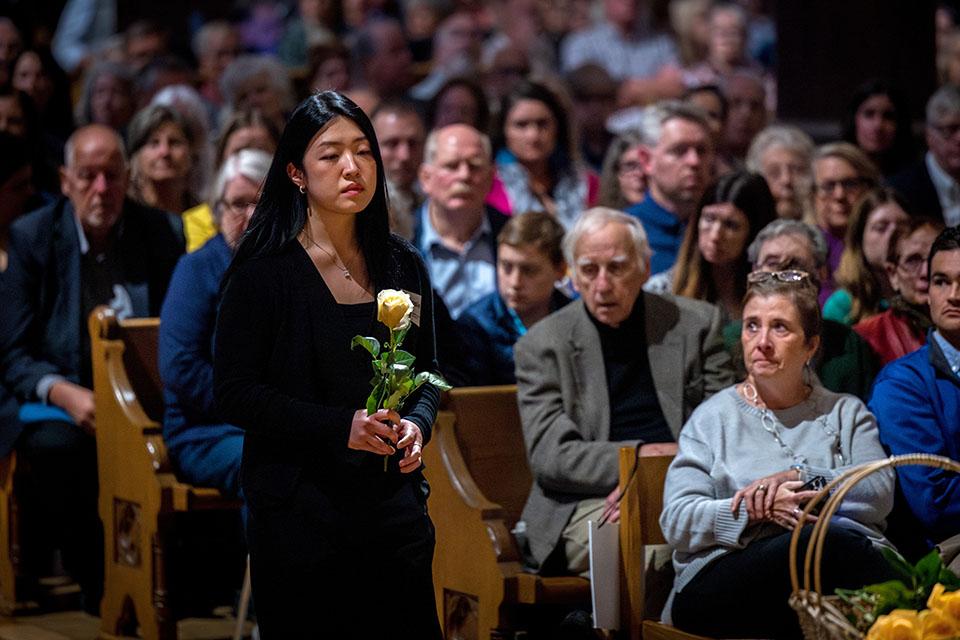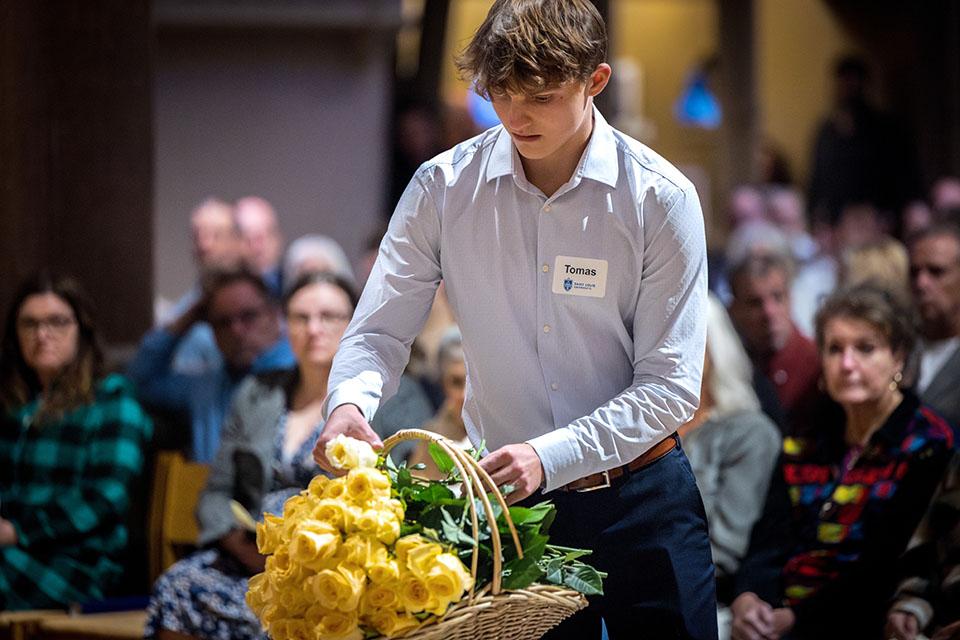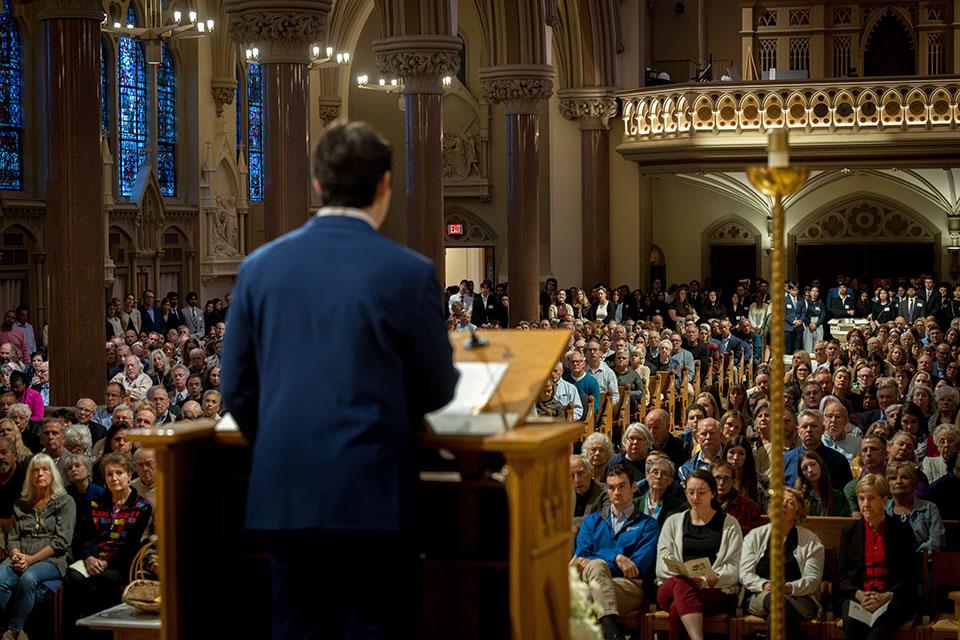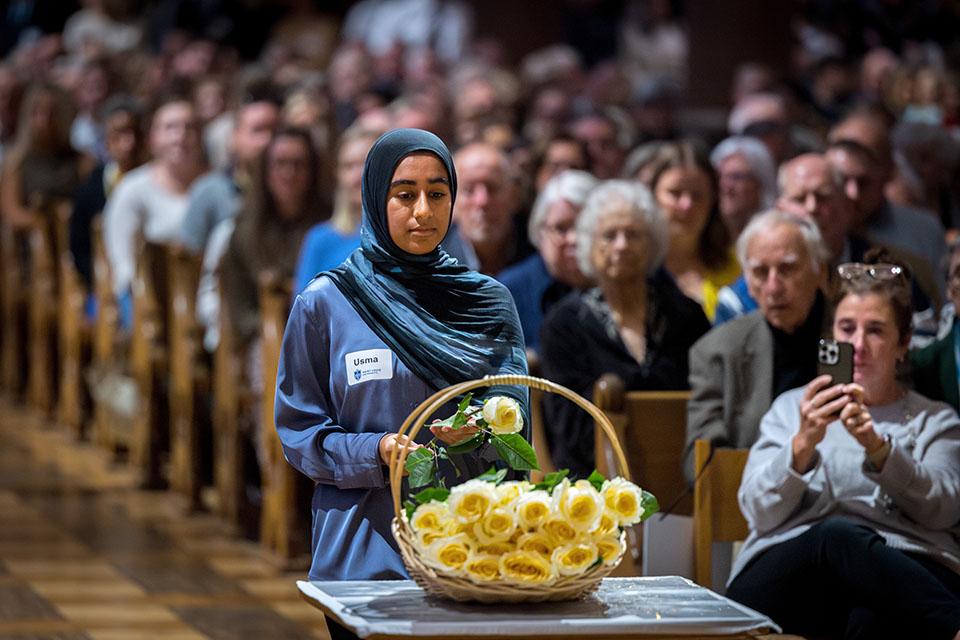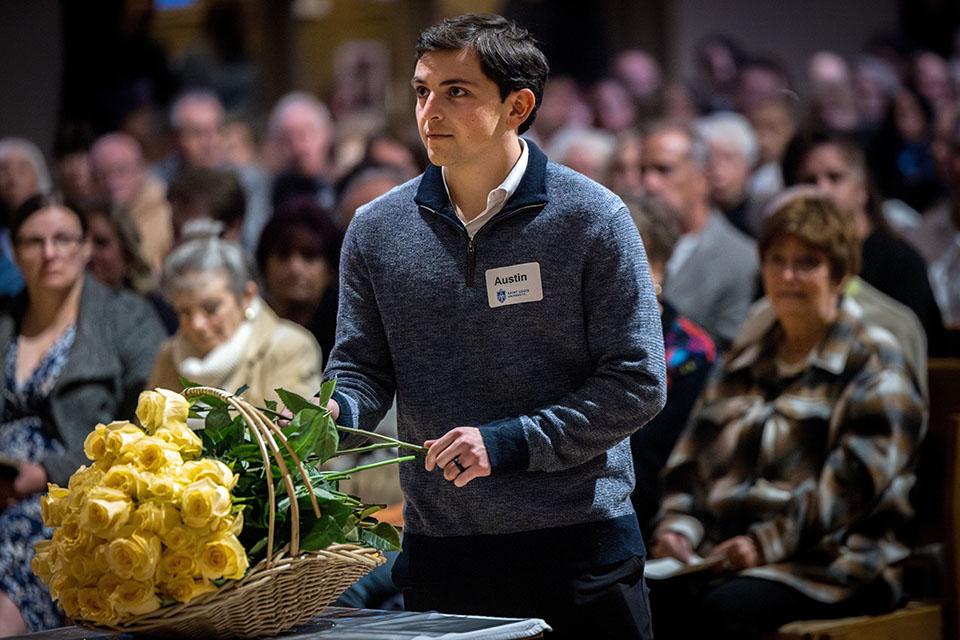SLU Students Commemorate Legacy of Gift Body Donors at Memorial Service
Bridjes O'Neil
Communications Specialist
bridjes.oneil@slu.edu
314-282-5007
Reserved for members of the media.
ST. LOUIS — Students from Saint Louis University’s School of Medicine Class of 2029, along with graduate students from the SOM's Master of Anatomy program and the Doisy College of Health Sciences, recently gathered for an interfaith memorial service to honor 355 individuals who generously donated their bodies to SLU's Gift Body Program.
The ceremony united students, faculty, staff, administrators, Campus Ministry, and the families and friends of the donors in a moving tribute to lives that continue to teach. John Martin, Ph.D., director of SLU’s Gift Body Program, expressed deep gratitude for the donors’ contributions to medical education.
“The foundation of medical care relies heavily on the anatomical knowledge gained through cadaveric dissection—knowledge made possible only through the donors’ selfless gifts,” Martin said.
This year’s memorial recognized donors whose gifts support the training of future health care professionals, including physicians, physical and occupational therapists, athletic trainers, anesthesiology assistants, physician assistants, and educators.
Led by students, the service featured musical performances and heartfelt reflections that highlighted the profound impact of the donors on their educational journeys.
David Suwalsky, S.J., Ph.D., vice president for mission and identity, opened the ceremony with an invocation, emphasizing the sacred nature of the gathering.
Students Erin Spinner, Sakshi Tiwari, Jake Dourdourekas, Hayley Hampton, Marissa Talley, and Aakarsh Rai shared personal stories of how the donors’ gifts have shaped their paths.
Dourdourekas, a medical student, reflected on a quote he learned in high school: “‘Great achievement is usually borne of great sacrifice and is never the result of selfishness.’ The donors’ selflessness allows us to grow into the physicians we aspire to be.”
He added that one donor’s death from the same condition as his grandmother created a deeply personal connection to the experience.
Hampton, a physician assistant student, described the way the program expanded her understanding of what she’d previously learned in the classroom.
“For many of us, we will never have another experience to physically learn from the innate structures that make up our physical form. The knowledge we gained has helped to further cement all the prior teachings of disease, and how these issues come to fruition.”
Talley, also a medical student, shared her personal connection to the program. :
“Funerals help us grieve and say goodbye—something many donors postponed so we could learn. My grandfather’s donation last year reminded me that these gifts are rooted in love and generosity. Each donor leaves behind a legacy of healing through education.”
The ceremony concluded with a symbolic flower procession by the School of Medicine Class of 2029. Students placed yellow roses into a basket containing the names of the donors, which were later be taken to the cemetery. Upon completion of studies, the donors’ remains are cremated and respectfully interred twice a year at SLU’s plot in Saints Peter and Paul Cemetery in South Saint Louis.
About Saint Louis University
Founded in 1818, Saint Louis University is one of the nation’s oldest and most prestigious Catholic research institutions. Rooted in Jesuit values and its pioneering history as the first university west of the Mississippi River, SLU offers more than 13,300 students a rigorous, transformative education that challenges and prepares them to make the world a better place. As a nationally recognized leader in research and innovation, SLU is an R1 research university, advancing groundbreaking, life-changing discoveries that promote the greater good.
About SLU School of Medicine
Established in 1836, Saint Louis University School of Medicine has the distinction of awarding the first medical degree west of the Mississippi River. The school educates physicians and biomedical scientists, conducts medical research, and provides health care on a local, national and international level. Research at the school seeks new cures and treatments in five key areas: cancer, liver disease, heart/lung disease, aging and brain disease, and infectious diseases.


















